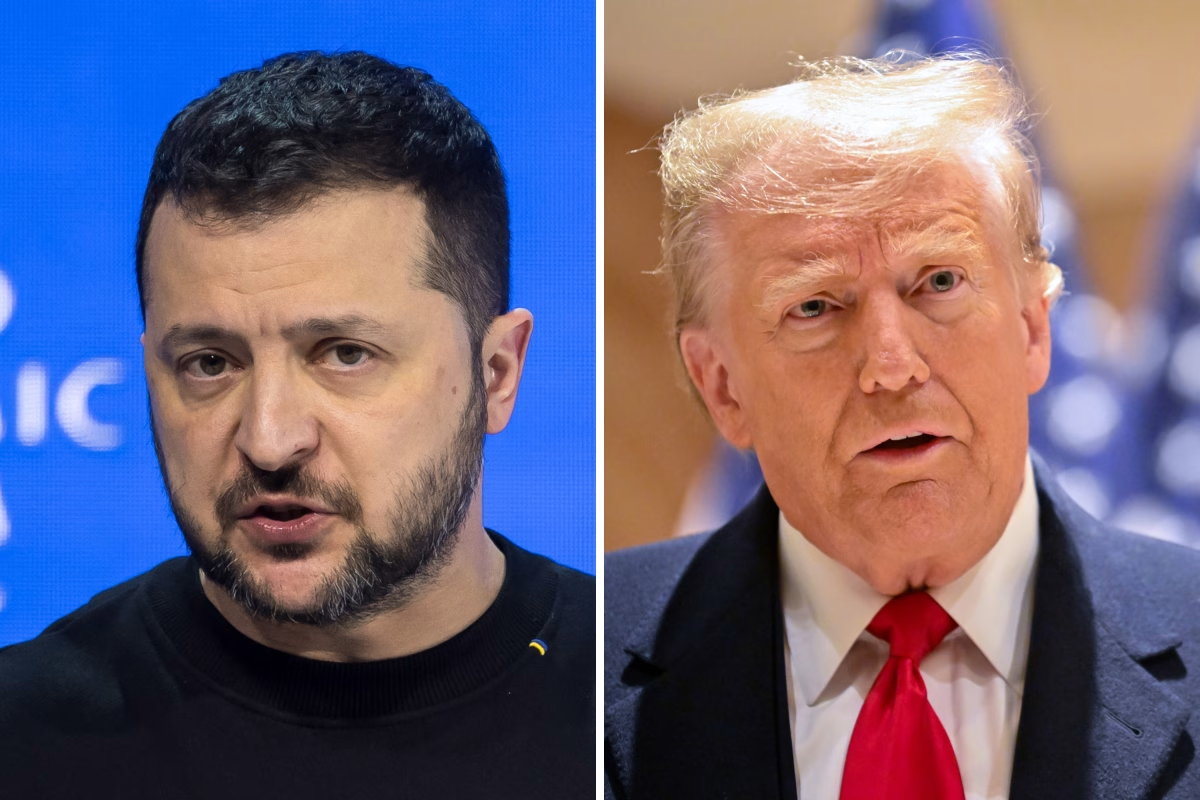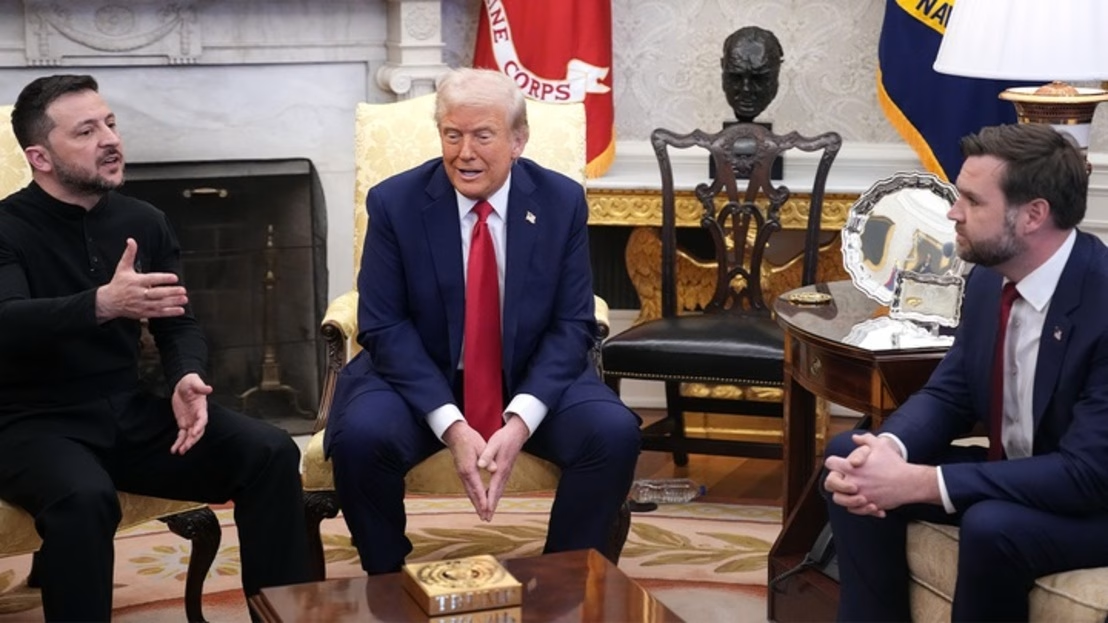By Don Terry & Tony Bruce | Monday, February 24, 2025 | 5 min read
If anything, Zelensky should consider setting up an Anti-Trump Lies Unit (ATLU) to counter the misinformation coming from Trump—many of which sound eerily like Kremlin talking points. This unit should back their statements with facts and evidence.
If Trump misrepresents the amount of U.S. financial aid to Ukraine—claiming figures between $350 billion and $1 trillion while suggesting that European countries have contributed significantly less or are simply loaning funds with the expectation of repayment—it’s crucial to set the record straight. A fact-based breakdown could clarify the actual contributions from the U.S., Europe, and Canada, ensuring an accurate understanding of global support for Ukraine. Additionally, a comprehensive analysis could shed light on the devastating toll of the war, emphasizing the widespread human suffering. And if Trump is using this misinformation as leverage to pressure Ukraine into making concessions, it should be recognized for what it truly is—an attempt at coercion.
Since Russia launched its full-scale invasion in February 2022, the United States has committed approximately $183 billion in aid to Ukraine. This support includes military assistance, economic aid, and humanitarian relief.
Globally, total aid to Ukraine has reached around €400 billion ($430 billion) as of December 2024, with contributions from European nations and other allies. Yet, despite Ukraine’s struggle for survival against Russian aggression, Donald Trump continues to label President Volodymyr Zelensky a “dictator”—even though he was democratically elected in 2019. Meanwhile, Trump has remained silent on Vladimir Putin, whose most vocal political opponent died in prison just weeks before Putin secured another term in a widely condemned election.
Lately, Trump and his team have escalated their rhetoric—undermining NATO, aligning with far-right European politicians, and threatening a trade war with the European Union over what he calls its “very unfair” treatment of the U.S. These moves have fueled growing concerns among European officials and diplomats, many of whom are beginning to ask the uncomfortable question: Is Trump actually siding with Russia?
His words and actions consistently align with Russian interests—whether it’s attacking Ukraine, undermining NATO, or fostering divisions among Western allies. While he hasn’t explicitly declared support for Russia, his policies, rhetoric, and personal admiration for Putin suggest that Moscow stands to gain from a second Trump presidency.
Meanwhile, behind closed doors, Trump’s national security adviser reportedly urged Ukrainian officials to “tone it down” after days of Trump lobbing baseless attacks at Zelensky. But all Zelensky did was push back with facts—correcting Trump’s disinformation without resorting to the same inflammatory tactics.
Appearing on Fox & Friends Thursday, Rep. Mike Waltz revealed that top figures in the administration—including Vice President JD Vance, Treasury Secretary Scott Bessent, and Trump himself—are growing “frustrated” with Ukrainian leadership.
His comments come as relations between the U.S. and Ukraine continue to strain, with Trump seemingly warming up to Russian President Vladimir Putin, despite Russia’s ongoing aggression.
Trump has spent the past week attacking Zelensky, falsely labeling him a “dictator” in speeches—including one at a Saudi-backed investment conference in Florida.
At the same time, Trump claimed Zelensky’s “only real skill” was manipulating Joe Biden, echoing classic Kremlin narratives aimed at discrediting the Ukrainian leader.
Trump’s Falsehoods Align with Kremlin Talking Points
Trump’s rhetoric aligns closely with Russian propaganda. He falsely claimed:
- Ukraine started the war—a complete inversion of reality, given that Putin ordered the full-scale invasion in 2022, violating international law.
- Zelensky’s approval rating is at 4%—when in reality, a recent poll puts it at 57%.
That last lie was so convenient for Moscow that Kremlin spokesman Dmitry Peskov eagerly repeated it on Thursday, telling reporters: “The fact that Zelensky’s rating is falling is an absolutely obvious trend.”
Waltz’s demand for Ukraine to “tone it down” came a day after Zelensky pointed out that Trump appears to be “trapped in a disinformation bubble.”
Unlike Trump, Zelensky was careful in his wording, saying, “With all due respect for him as the leader of a nation that we respect greatly.” But that didn’t stop Trump’s inner circle from taking offense.
Vice President JD Vance called Zelensky’s remarks “disgraceful” and accused him of “badmouthing” the administration. Waltz echoed this outrage, complaining on Fox News:
“For all the administration has done and all the United States has done for Ukraine, this kind of pushback is unacceptable. They need to tone it down and sign that deal.”
The deal he referenced was a proposed agreement that would have forced Ukraine to hand over half of its rare earth minerals in exchange for continued U.S. military support. Trump’s team presented the proposal at a defense conference in Munich last week—Zelensky flatly refused to sign it.
Meanwhile, Trump has been cozying up to Putin:
- Reopened direct communication with the Russian leader last week.
- Sent U.S. envoys to meet Russian officials in Saudi Arabia on Monday.
- Floated the idea of bringing Russia back into the G7.
While Trump’s team claims these talks are meant to help end the war, Kyiv and European allies are increasingly concerned that a Putin-friendly deal is in the works—one that could come at Ukraine’s expense.
Zelensky isn’t the only one pushing back. German Foreign Minister Annalena Baerbock dismissed Trump’s attacks as “totally absurd,” pointing out the obvious:
“If you didn’t just hastily tweet and looked at the real world, you would know who in Europe actually has to live under dictatorial conditions: the people in Russia.”
As Trump continues parroting Kremlin narratives, world leaders—and Zelensky himself—aren’t backing down.
Copyright 2025 FN, NewsRoom.






